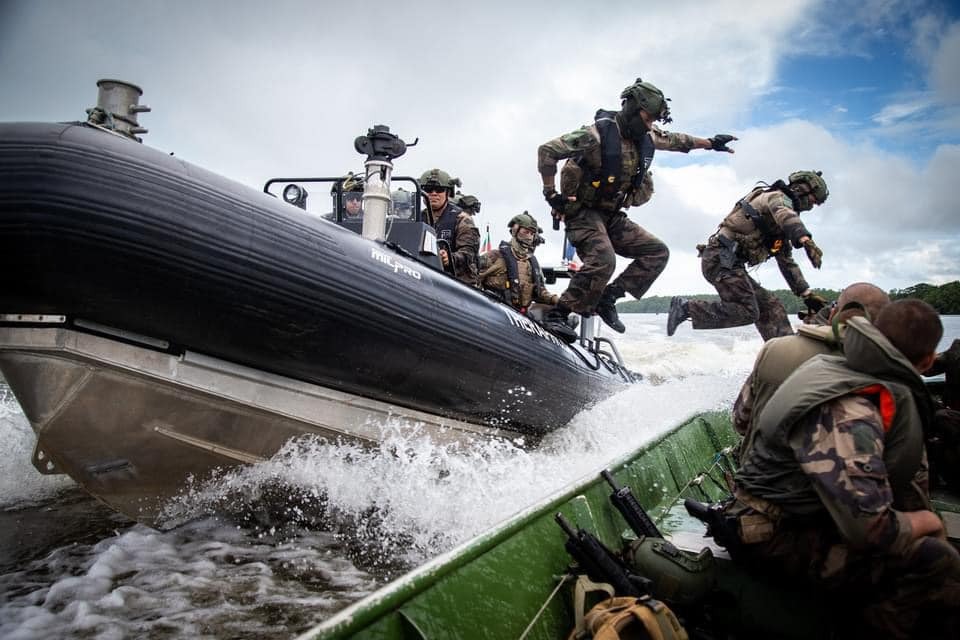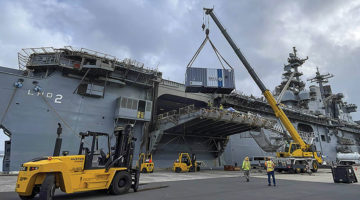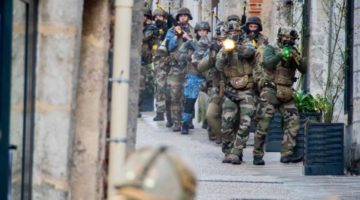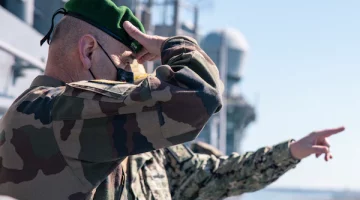By Murielle Delaporte* – Last October, in his first national assembly testimony as Chief of staff of the French armed forces since he replaced general Lecointre in July, General Thierry Burkhard forcefully stressed the necessity for France to ‘’win the war before the war’’ and to be ready for high intensity warfare.
The same way the U.S. military has been realizing that the ‘’long wars’’ were diverting the forces from training for future full-spectrum peer-to-peer conflicts by exclusively focusing on expeditionary warfare, the French military has been increasingly warning about the risks involved with last decades’ heavy focus on overseas operations at the expense of incoming threats.
The current 2019-2025 program law, meant to catch up with the renewal of French armed forces equipment across the board, has been considered by many as the revival of long-needed capabilities. The new Chief of the French Army, General Pierre Schill, referred to the current process of transformation as the ‘’most important modernization undergone since World War II’’.
Indeed, the Scorpion program engaged decades ago to digitally connect Army assets is finally coming to life with in particular the deployment of the new armored vehicle Griffon in operation Barkhane, an operation meant to fight terrorism in Sahel since 2014 and which is currently being downgraded.
However, given the recent evolution of the geostrategic environment, French military chiefs all advocate that there is a need to rebalance quality with quantity. No way, any future peer-to-peer conflict will be won without operational superiority which certainly includes high technology, digitalization, AI, robots, and so on, but also mass and depth.
In Search For Depth
In a recent study by the French think tank IFRI (French Institute for International Relations) entitled ‘’’Mass in the French armed forces : a challenge for high intensity’’, the authors highlight the fact that ‘’between 1999 and 2014, European countries have shrunk their tank fleet by 66%, their fighters’ by 45% and their surface fleets’ by 25 % ‘’.
France alone, like every other nation in the Western world, has been reducing in the name of the post Cold War peace dividends the number of battle tanks from 1349 in 1991 to 222 in 2021, the number of fighters from 686 to 254, the number of large surface ships from 41 to 19 and its active-duty manpower from 453 000 to 203 000, the study points out.
The end-result is that the above-mentioned operation in Sahel, which mobilizes 5,100 French troops and 76 % of French Army equipment deployed in operation, tends to divert resources and time to properly prepare for larger and tougher contingencies. In the past six years, the French Army has been loosing 2 war-damaged vehicles a month and having a hard time to keep the readiness rate at the required levels.
Improving readiness has been a major priority in the past years, but early Army planning of high intensity scenarios, based, according to a recent seminar held on this issue, on ‘’a symmetric division level engagement for a period of 6 months’’, suggests very strong and rapid attrition rates with ‘’36% of the deployed equipment destroyed each month’’ and – not surprisingly – the inability of the support system to repair and provide spare fast enough to be able to win.
The commander of French Army military schools (‘’Ecoles militaires de Bourges et Ecole du Matériel’’), General Eric Laval, indeed wonders whether the French armed forces would be able to last more than 48 hours in a high intensity conflict. Current military engagements do include high intensity combat on a regular basis, during which French armed forces still prevail, but not for a long lasting period.
The military – the Army, but not only – is therefore reflecting on ways to gain strategic depth, including going back to the good old Cold War stock policy and industrial mobilization schemes, while of course maintaining its current deployments and fight against asymmetric threats fully operational.
Indeed, ‘’winning the war before the war’’ not only means prepare to deter and to be ready on D-day, it also means being able to deal with the new large variety and mix of symmetric and asymmetric threats. If France has always tried to invest in the ‘’full spectrum’’ of capabilities and be present in multiple theaters from Europe and Africa, to the Middle-East and the Indopacific region, the emerging threats are increasingly hybrid, as the latest Belarus-Polish stalemate illustrates.
New skillsets – whether in the cyber, space or information fields – are being pursued in order to deal with the ever blurry concept of thresholds – the infamous ‘’grey area’’ – and having the ability to de-escalate from contest back to competition is considered the key to prevent high intensity wars to occur.
The French chief of the armed forces describes this paradigm shift as a transition from the old tryptic ‘’peace-crisis-war’’ to ‘’competition-dispute-showdown’’. For him, one of the best way to remain or regain operational superiority over our enemies is to train with allies in high intensity scenario-based exercises, such as Orion 2023, a major joint exercise planned in Champagne -Ardenne with US, Belgian and maybe British armed forces.
*A version of this article has been published by breaking Defense >>> https://breakingdefense.com/2021/12/france-wants-to-transform-its-beautiful-army-for-high-intensity-warfare/
Photo © exercice Harpie, Armée de Terre, 10 décembre 2021












